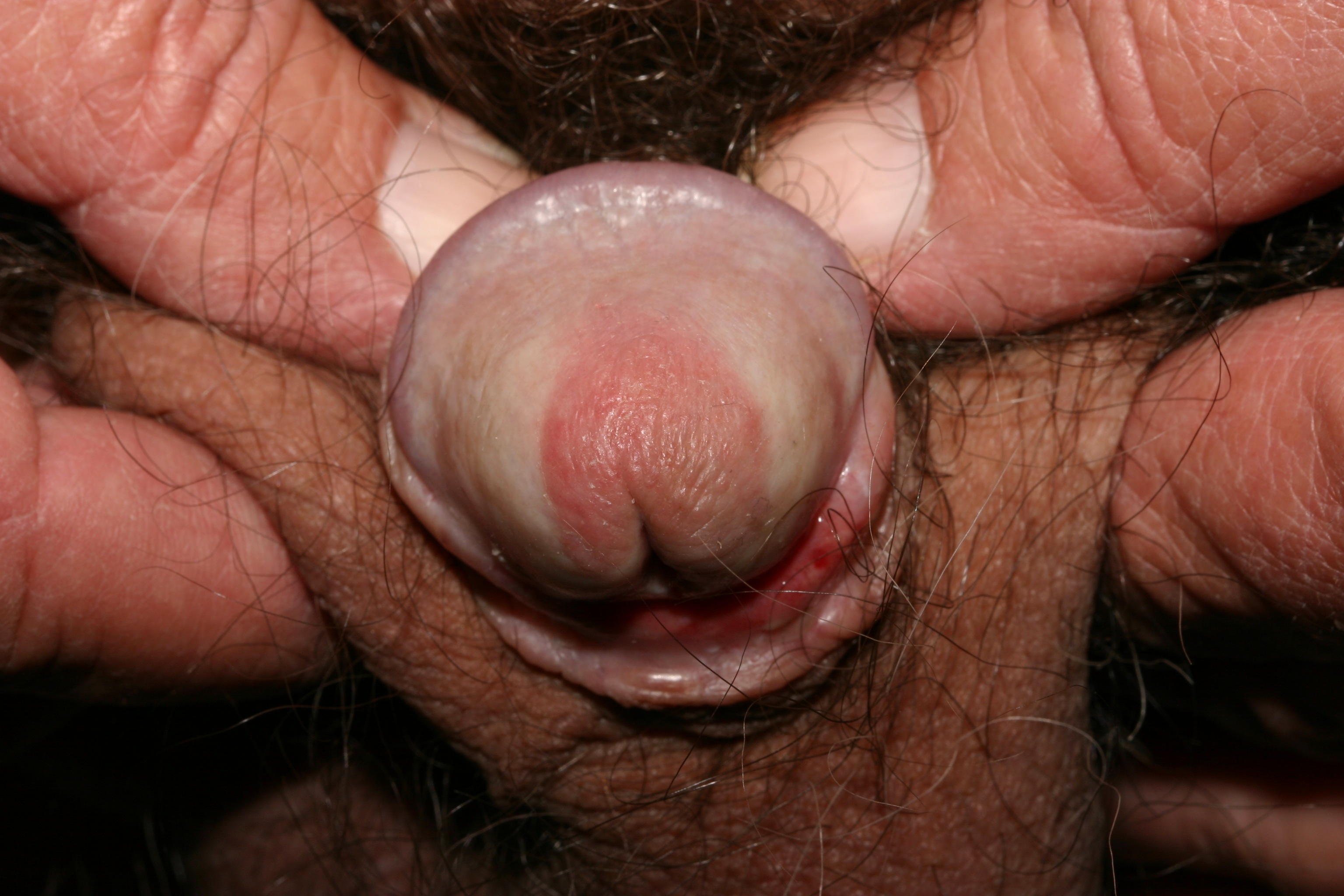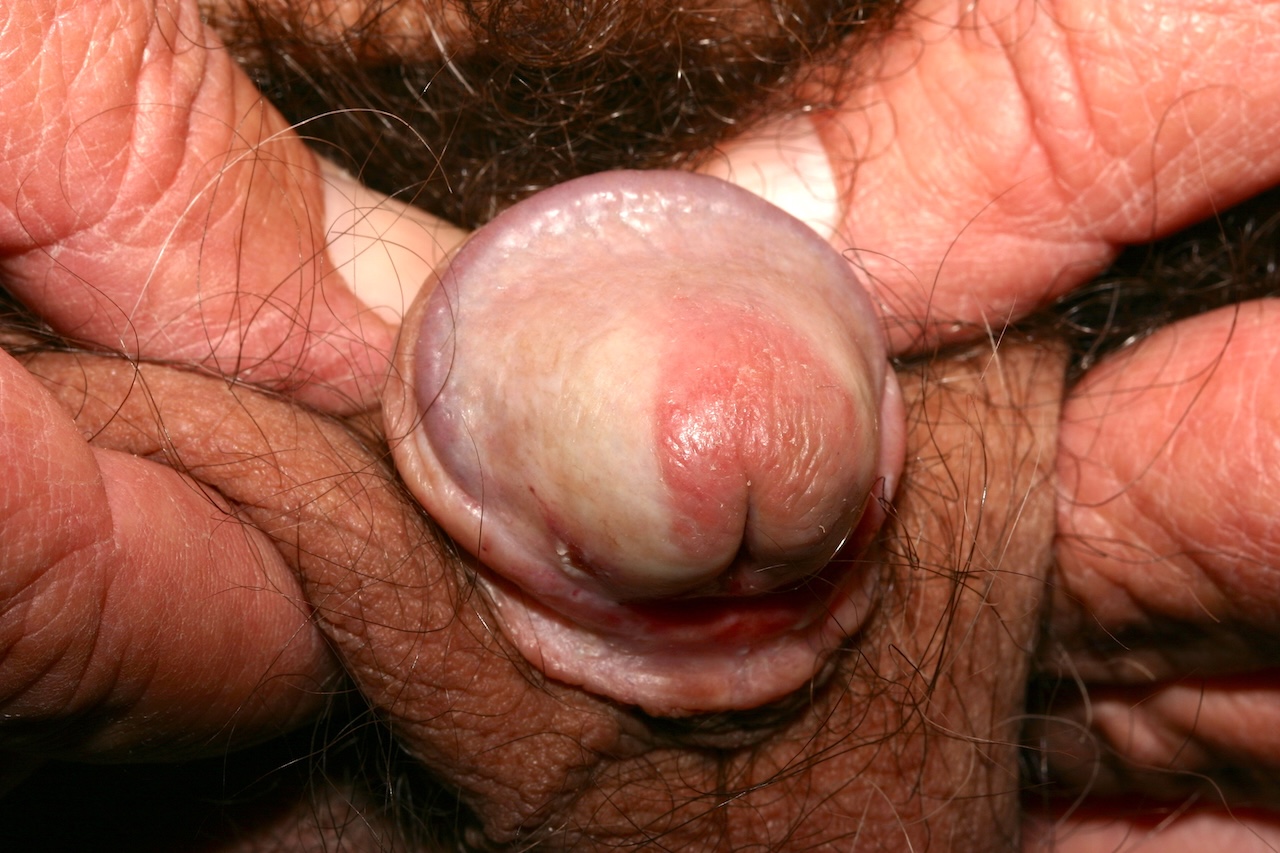
Circumferential narrowing of the shaft with retraction of the foreskin, so called "waisting."
BALANITIS XEROTICA OBLITERANS
Balanitis xerotica obliterans (BXO) is characterized by atrophic white patches and plaques on the penis. It is the penile equivalent of lichen sclerosus (LS).
- In one study, 98% of patients with BXO were uncircumcised.
- Compelling arguments have been made that micro incontinence and exposure of the skin to urine is associated.
- Obesity is a risk factor and in a review of these patients, 84% acknowledged urinary microincontinence (dribbling) supporting the theory that the occlusive influence of urine contributes to the development of BXO and LS. Dysfunction of urethral low pressure valves may be involved.
- Perianal disease is uncommon. This is in contrast to female LS and may be because the scrotum prevents chronic urine exposure.
- Circumcision virtually prevents BXO. the theory here is that in the case of micro incontinence, the underwear absorbs the urine preventing chronic epithelial exposure.
- BXO has been associated with squamous cell carcinoma and very rarely penile melanoma. Biopsy not uncommonly shows intraepithelial neoplasia.
- Sexual dysfunction via male dyspareunia is common.
- Urethral stricture may occur.
White, atrophic patches occur on the glans head, corona and shaft. Purpuric patches are not uncommon. A circumferential band may constrict the penis--so called waisting.

In this man, BXO affected only the skin covered by the foreskin, presumably due to urine "trapped" under the foreskin. The pink area around the meatus shown here was not covered by the foreskin "at rest," whereas the white affected skin was.

RegionalDerm
Homepage | Who is Dr. White? | Privacy Policy | FAQs | Use of Images | Contact Dr. White
It is not the intention of RegionalDerm.com to provide specific medical advice, diagnosis or treatment. RegionalDerm.com only intends to provide users with information regarding various medical conditions for educational purposes and will not provide specific medical advice. Information on RegionalDerm.com is not intended as a substitute for seeking medical treatment and you should always seek the advice of a qualified healthcare provider for diagnosis and for answers to your individual questions. Information contained on RegionalDerm.com should never cause you to disregard professional medical advice or delay seeking treatment. If you live in the United States and believe you are having a medical emergency call 911 immediately.


